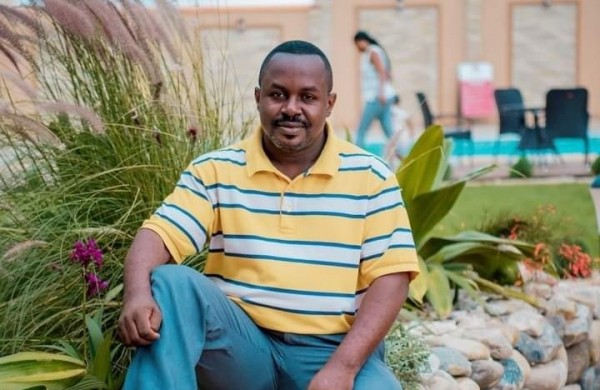This week marks the 20th anniversary of the start of the Rwanda genocide, which killed nearly one-in-seven people in the small African nation. Today, there is continuing debate about the role of the news media in the calamity – from the role local broadcasters and newspapers played in fuelling ethnic hatred, to concerns that the shallowness of international coverage in the early days contributed to the lethargic international response.IPI draws on the experience of several journalists to reflect on the media coverage of the Rwanda genocide – and its impact today on press freedom in Rwanda. These commentaries also serve to help encourage discussion at the forthcoming IPI World Congress in South Africa, 12-15 April 2014.
No tragedy was heralded to less effect than the 1994 genocide of the Tutsi of Rwanda. By the time the UN blue helmets arrived to monitor the peace agreement it was probably too late for peacekeeping. Yet no one could have imagined the scale or the brutality of what was to come.There is no doubt that the events in Rwanda in April 1994 took everyone by surprise, not the least the British and the American media. The news coverage of Rwanda was certainly handicapped by danger on the ground. Yet the massive failure by the Western press to adequately report the 1994 genocide of the Tutsi cannot be so easily explained away.In a startling rebuke afterwards the characterisation by the press of the genocide as “tribal anarchy” was deemed by an international enquiry to have been fundamentally irresponsible.* In reality, a planned annihilation was under way. This was not a sudden eruption of “long-simmering hatred”. Genocide does not take place in a context of anarchy. This was the deliberate elimination of political opponents and an attempt to exterminate all Tutsi.
The media’s failure to report that genocide of the Tutsi was taking place, and thereby generating public pressure for something to be done to stop it, was said to have contributed to international indifference and inaction, and possibly to the crime itself. It was left to non-governmental organisations – most notably the UK office of Oxfam – to give the crime its rightful name and lead calls for something to be done to try to draw the world’s attention. The basic inference in the press was that in the face uncontrollable savagery then nothing could be done. One British newspaper reported without question the view of a western diplomat in the capital, Kigali, who told a journalist how “various clans were murdering others”.
For several weeks a fog of misinformation shrouded what was happening. Roger Winter, the director of the U.S. Committee for Refugees, who had known Rwanda since 1983, and had just returned when the genocide started, was desperate to change the perception in the press that this was tribal warfare. He wrote an article to explain how the violence was political in nature and that this was a plot by an extremist clique to cling to power. This clique, a mafia grouping of murderous northerners known as the “Akazu”, was using ethnicity to achieve its aims. Winter’s article was rejected by most American papers, including the Washington Post and The New York Times. It was eventually published in Toronto’s Globe and Mail on April 14.
The next day an article in The New York Times described Rwanda as small, poor and globally insignificant. Rwanda, the newspaper explained, was in an “uncontrollable spasm of lawlessness and terror”. It was a “failed central African nation-state with a centuries-old history of tribal warfare and deep distrust of outside intervention”.
On April 20, Jeri Laber, executive director of Helsinki Watch, wrote to The New York Times that the UN should find a means to protect the innocent. To describe ancient hatreds in Rwanda was deplorable, faulty and dangerous.
The lack of adequate newspaper coverage had the effect of reducing pressure on key UN member states who were failing to acknowledge that the 1948 Genocide Convention was applicable. A further failure was to properly hold the UN Security Council accountable for its decision-making over Rwanda and to explain what the options really were to try to stop the killing from spreading. It was in the Council that the decision was taken to withdraw blue helmets and to determine to collapse the UN Assistance Mission for Rwanda (UNAMIR); in so doing a green light for their plans was given to the killers of the Hutu Power movement. While some 470 volunteer peacekeepers stayed on in Rwanda trying to save as many people as possible, the UN failed even to resupply them.
With no outcry about genocide in the press, no choices were given and no risks were taken. At the very least the genocide should have been condemned in the strongest possible terms by the press. Those responsible for the genocide, and their names were known, should have been publicly denounced. Even the gallantry of Lt.-General Roméo Dallaire, the force commander of UNAMIR, and a brave contingent of the International Committee of the Red Cross (ICRC) under their chief delegate, Philippe Gaillard, remained for years unreported.
Why this pitiful lack of coverage of this massive story in this great age of information? The lack of adequate reporting of the genocide in Rwanda raises some serious questions and 20 years later most of them have yet to be adequately addressed. Lt.-General Dallaire once told me: “Rwanda was too small, too poor and too black”.
The writer is a widely published investigative journalist and is the author of several books, including Conspiracy to Murder. The Rwandan Genocide (2004). She is an honorary professor in the Department of International Politics at the University of Wales, Aberystwyth. Melvern served as a consultant to the Military One prosecution team at the International Criminal Tribunal for Rwanda.
___
*The International Response to Conflict and Genocide: Lessons from the Rwanda Experience. Joint Emergency Assistance to Rwanda. Copenhagen, March 1996.

